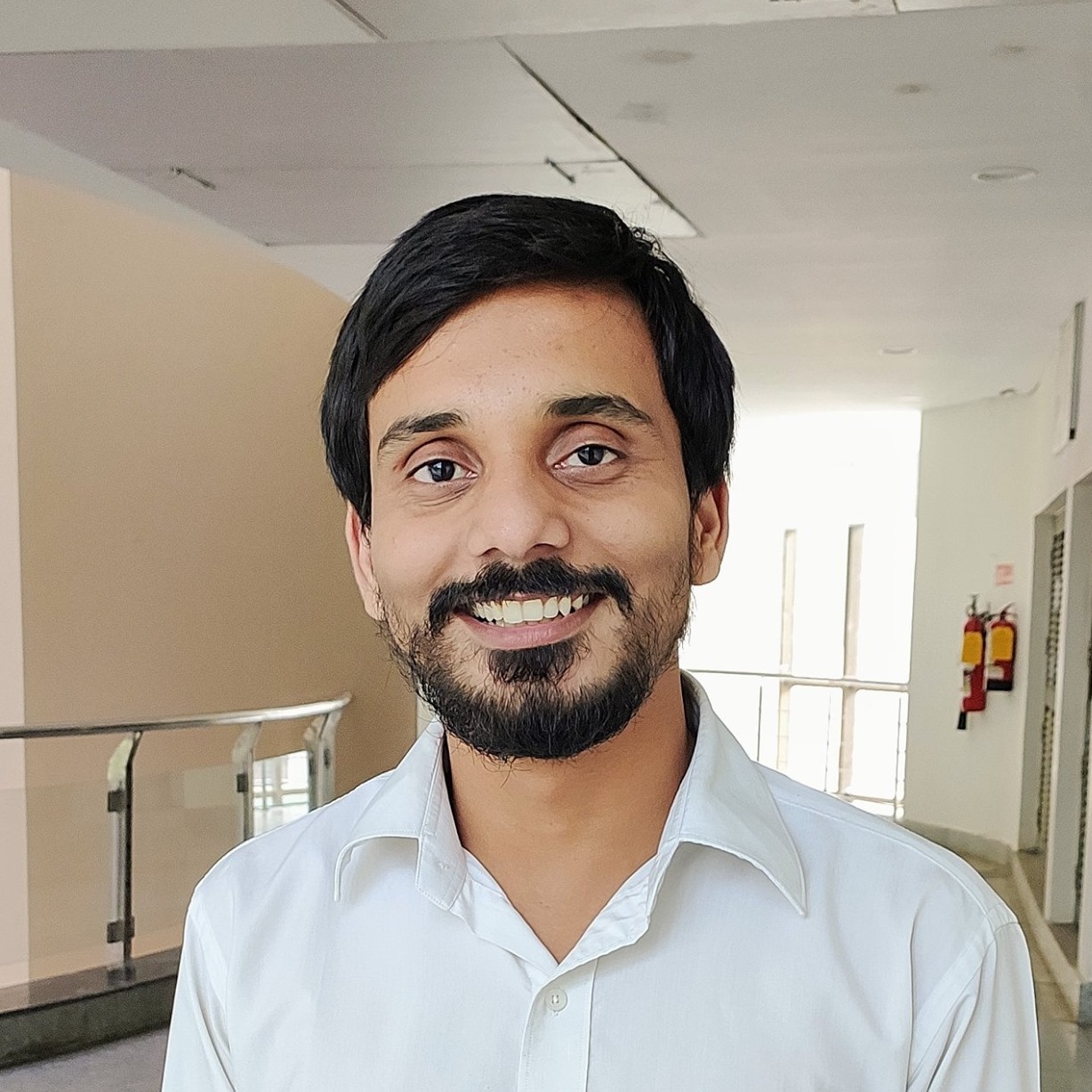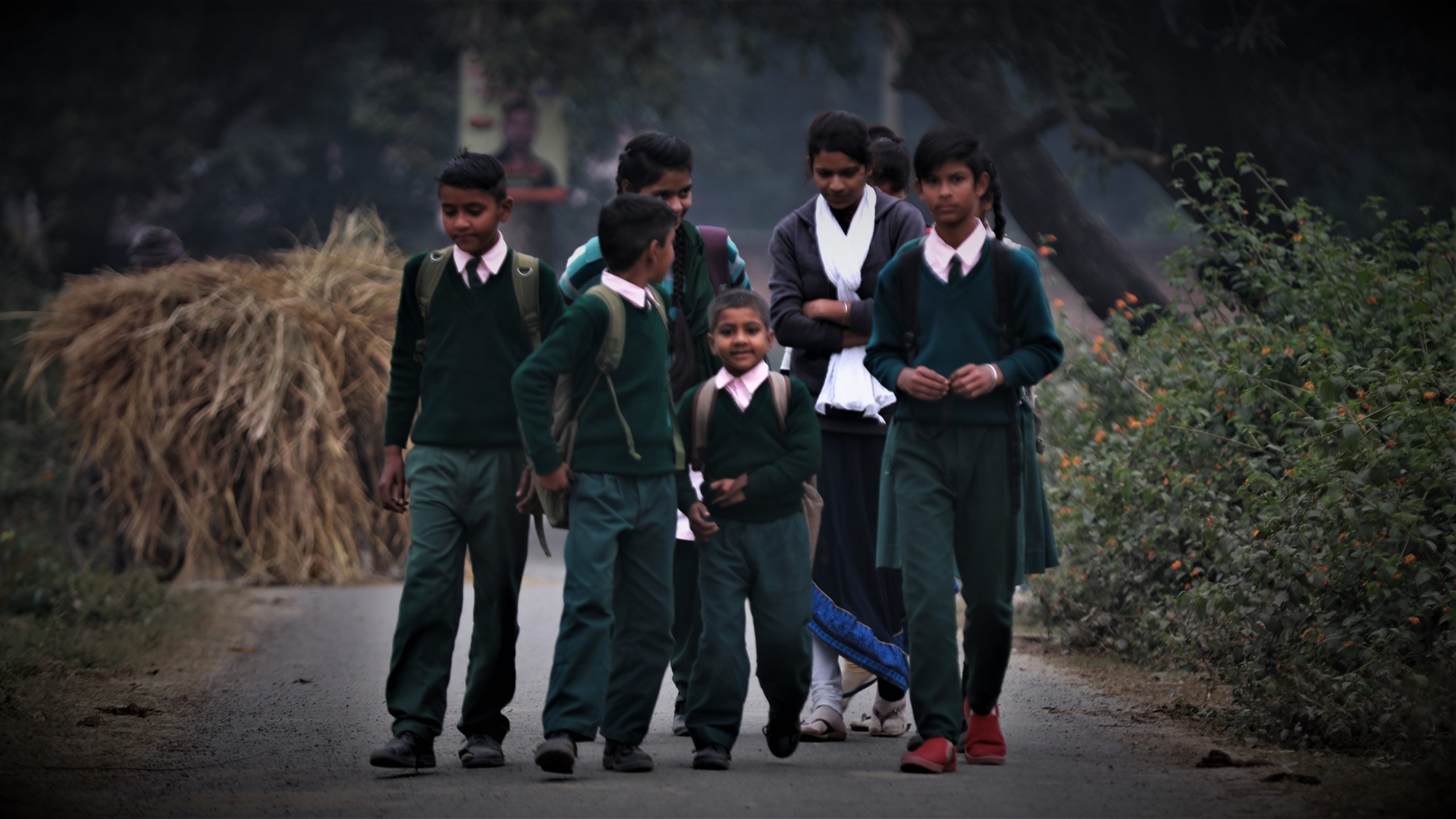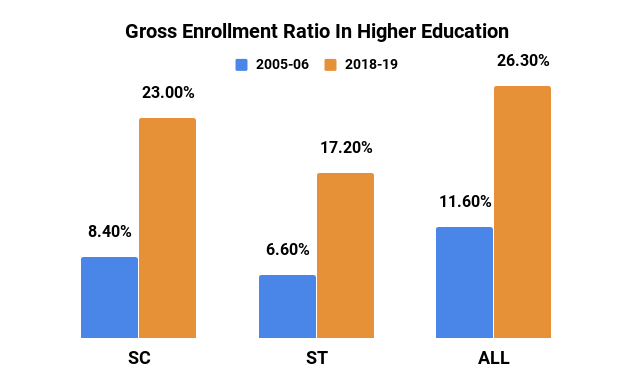Enrollment of girls for higher studies has increased, but there’s more to cheer about education
The percentage of those in the 18-24 age group enrolling for higher education has more than doubled since 2005-06. The government has set a target of 50% Gross Enrollment Ratio by 2030


In the 2000s, India had dreamt of becoming a world superpower by 2020. While we haven’t reached there yet, it is not that we have not achieved anything substantial. Take, for instance, the way higher education has spread in India.
According to the 2005-06 report of the Union Ministry of Human Resource Development (MHRD), the Gross Enrollment Ratio (GER) — the percentage of people in the 18-24-year age group going to colleges/universities for higher studies — was only 11.6%. The report of 2018-19 showed that the GER had increased to 26.3%. In other words, the percentage of people with access to colleges/universities had more than doubled from 2005.
The government has set a target of 50% GER by 2030.

Participation of girls
In 2005, only 9.4% of girls had enrolled for higher education. The ratio of female enrollment to male enrollment, called the Gender Parity Index (GPI), was just 0.69 in 2005. Today (as per the 2018-19 report), 26.4% of women in the 18-24 age group go to colleges/universities and the GPI has increased from 0.69 to 1.0.
The government’s scheme to promote girls’ education and the changing mentality of parents and society towards it have been mainly responsible for achieving 1.0 GPI in higher education. The trend is likely to continue, with more women entering jobs and other fields similar to higher education in the coming decades.
Participation of Dalits
Only 8.4% of Scheduled Castes (SC) and 6.6% of Scheduled Tribes (ST) were going for higher education in 2005. Today, the GER for the SC category has almost tripled to 23%. There is a similar improvement in the Scheduled Tribes category, with a GER of 17.2%.
This has been made possible, to a great extent, by the reservation system, government’s encouragement and the work of various NGOs towards promoting education among SCs/STs.

Participation of Dalit women
In 2005, the status of Dalit women in higher education didn’t paint a great picture. Only 6.4% of SC girls were able to access higher education. Among STs, only 4.7% of girls were enrolled for higher education, which meant more than 95 out of every 100 ST girls were deprived of higher education.
Today, 23.3% is the GER of SC girls, an over three-fold increase from 2005. What’s more, the percentage of girls is higher than boys, which stands at 22.7%. Among STs, the percentage of girls enrolling in higher education has increased almost four times to 16.5%.
Also, in the last 15 years, the GPI for the SC category has increased from 0.63 to 1.02 and for the ST category, from 0.55 to 0.9.
This can be considered a major success in making education accessible to all, which is essential for India to become a developed country. There have been great strides in higher education in about 15 years since 2005. It is time to speed up the process, for there are still miles to go.
Sachin Pandey is a PhD scholar at IISER, Kolkata
(Views are personal)

